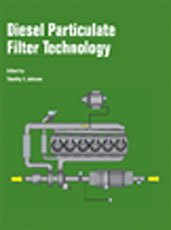Technical Paper
Mechanical Durability of Cordierite–Based NOx Adsorber/Catalyst Systems for Lean Burn Gasoline Applications
1999-10-25
1999-01-3500
One approach to the remediation of NOx generated under lean automotive engine conditions is its controlled storage and then periodic release and reaction under enriched conditions. This process is being considered for automotive exhaust systems that will be operated pre–dominantly lean for reasons of fuel economy. Because of the special characteristics of alkali and alkaline earth elements in the presence of NOx, they are being considered for use, in conjunction with γ–alumina–based washcoats and precious metal catalysts, as NOx catalyst coatings on cellular supports. It is known that alumino–silicates will react with alkali and alkaline earth elements to form stable ceramic phases when mixtures of the components are held in direct contact at elevated temperatures.


